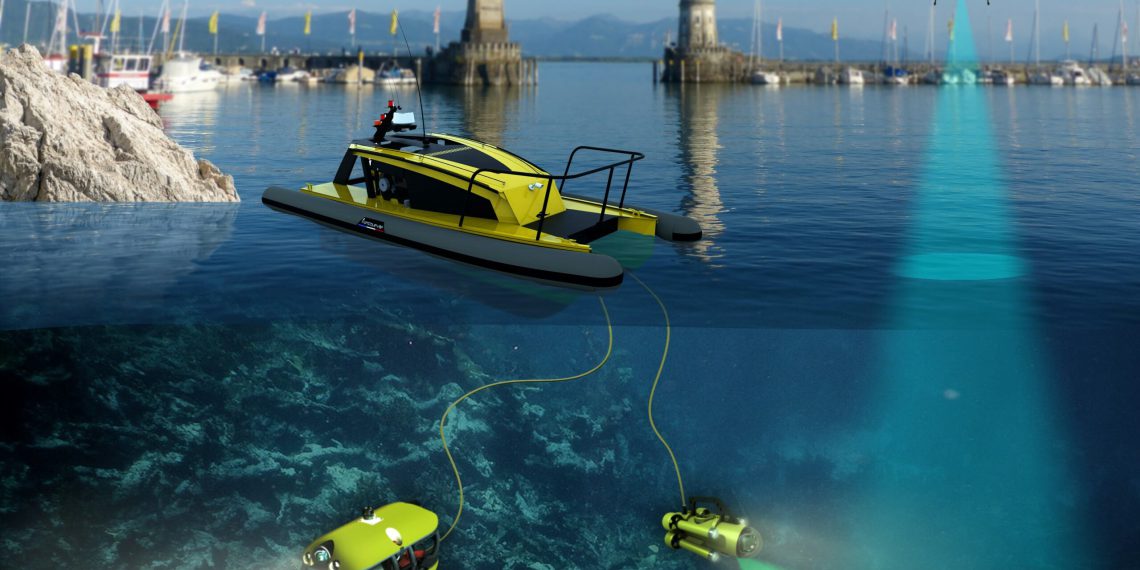Collecting trash in oceans and seas is very time-consuming and expensive. A team from the Technical University of Munich (TUM) is developing a robotic system in a European cooperation project that can locate and collect waste underwater. Machine learning methods are being used in the process.
There are currently between 26 and 66 million tons of plastic waste in our seas and oceans. Most of this is on the ocean floor. This poses a huge threat to marine life and the ecological balance of the oceans.
But cleaning up the waters is complex, expensive and often dangerous, because divers usually have to be deployed. In addition, cleaning operations are usually concentrated on the water surface. A team from TUM has joined forces with eight European partner institutes in the “SeaClear” project to develop a robot system that can also collect trash underwater.
Four robots act together
The system is made up of four individual robot components: An autonomously operating robotic boat performs an initial scan of the seafloor, locating major trash accumulations. Then, an observation robot is launched into the water to detect trash at depth while providing additional information, such as close-up images of the seafloor, to the computers.
When the water is clear and visibility is good, an aerial drone also ensures that further trash is detected in the water. Using all this information, a virtual map is generated. A collection robot then travels to certain points on the map and collects the trash. In the process, larger pieces are removed using a grabber in a basket connected to the ship.
The challenge of currents
“Developing autonomous robots for use underwater poses a very special challenge,” says Dr. Stefan Sosnowski, technical director of the SeaClear project at the Chair of Information Technology Control at TUM. This is because, unlike on land, very special conditions prevail in the water. “Once a piece of trash has been identified and located, the robot must first move close to it. In doing so, it can sometimes encounter strong currents, against which it must prevail. Getting that right is TUM’s job in the SeaClear project.”
Efficient machine learning
To do this, the team is using machine learning methods. An artificial intelligence (AI) calculates and learns when and under which conditions the robot moves in a certain way. This allows accurate predictions to be made about its behavior.
“Another challenge is that we don’t have the computing power we’re used to on land” says Prof. Sandra Hirche, head of the department and SeaClear project coordinator. “There is no connection to large data centers with high-performance computers. The algorithms we develop therefore have to be as efficient and resource-efficient as possible. That’s why we’ve been working for some time on methods with high “sampling efficiency” that can make the best possible predictions with as little data as possible. Information that is not needed is simply forgotten by the AI.”
90% success rate
Once fully operational, the SeaClear system is expected to classify underwater debris at a predicted rate of 80% and successfully collect it 90% of the time — comparable to the success of using divers. Initial trials of the prototype were conducted in October 2021 under clear water and visibility conditions in Dubrovnik, Croatia. There are to be further trials in the port of Hamburg in May 2022.

















